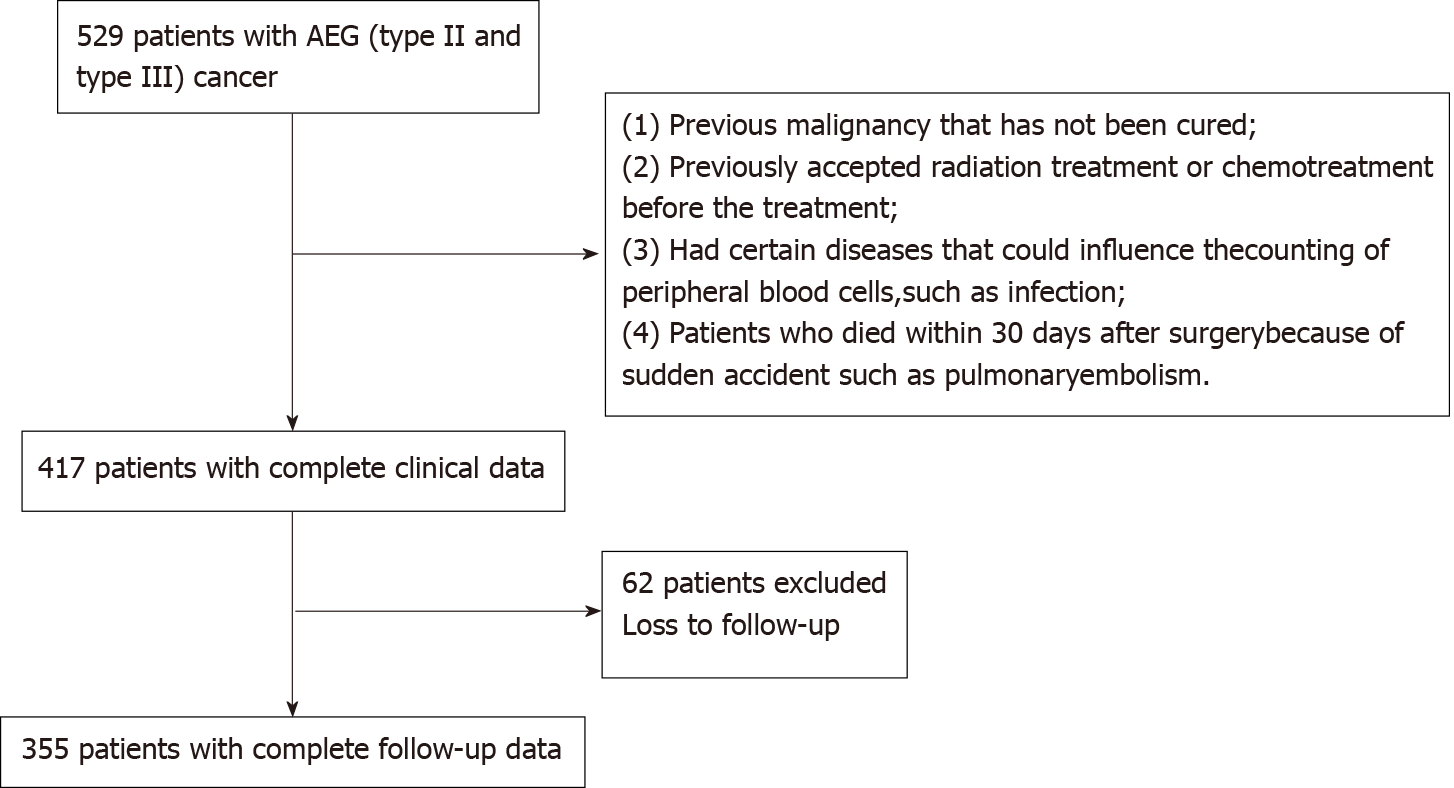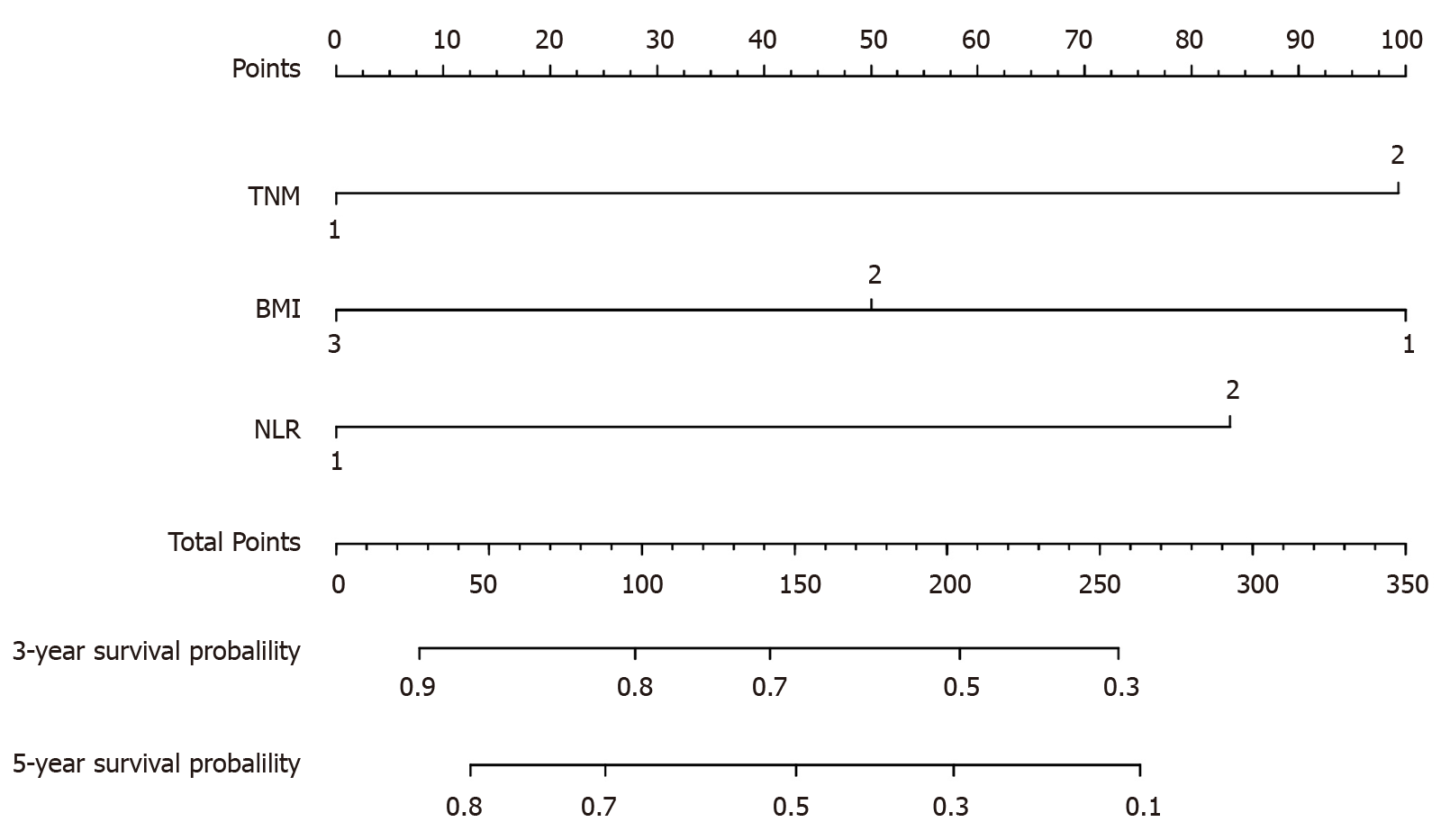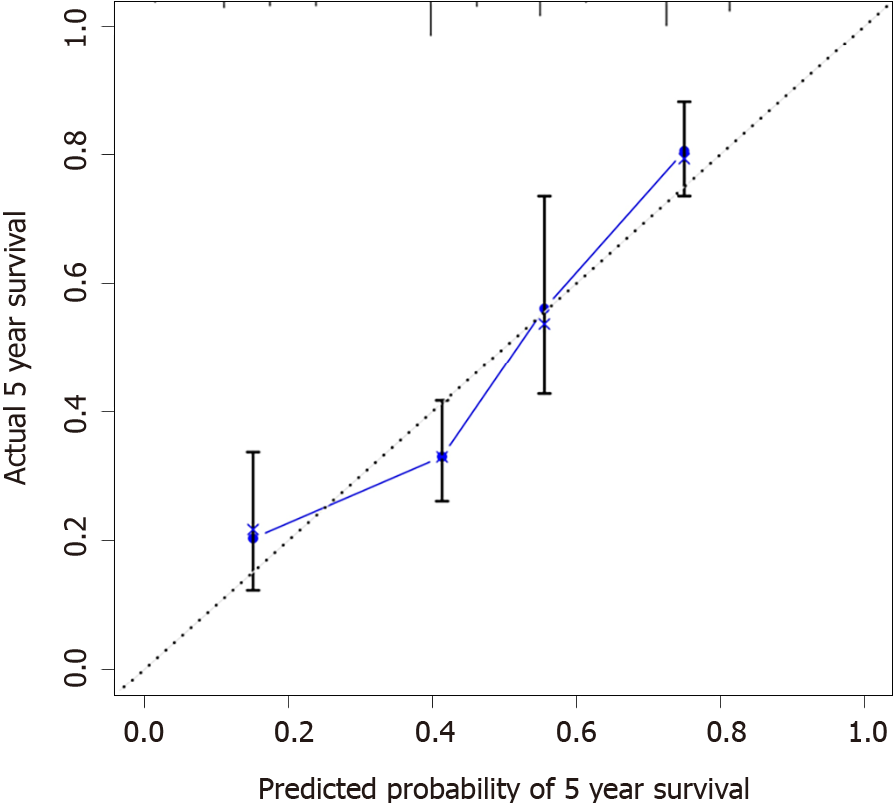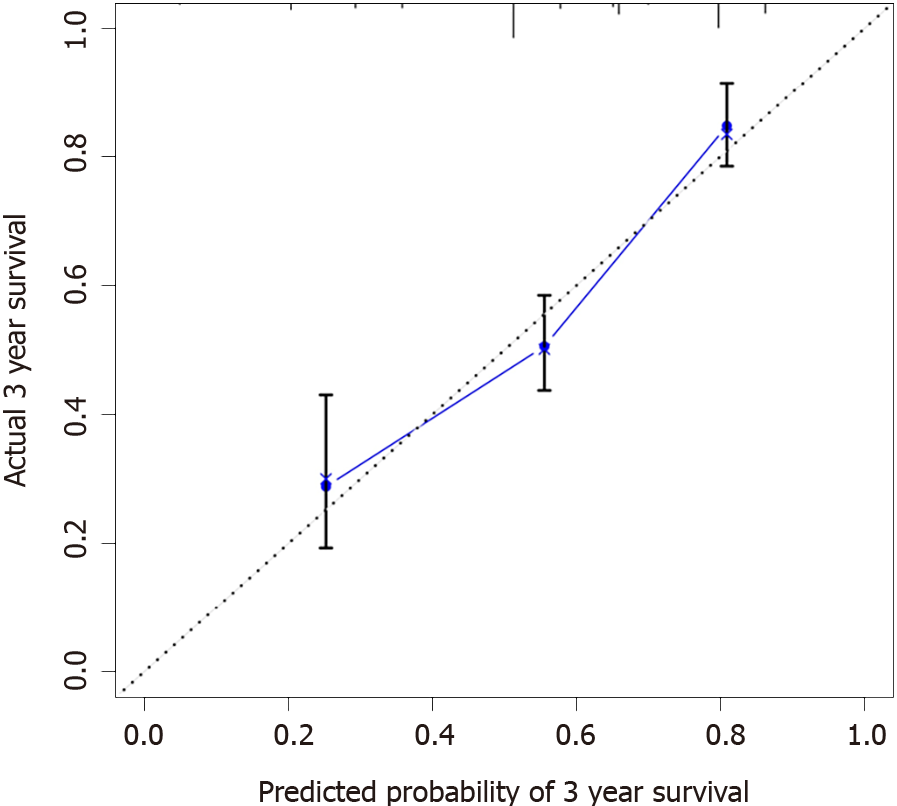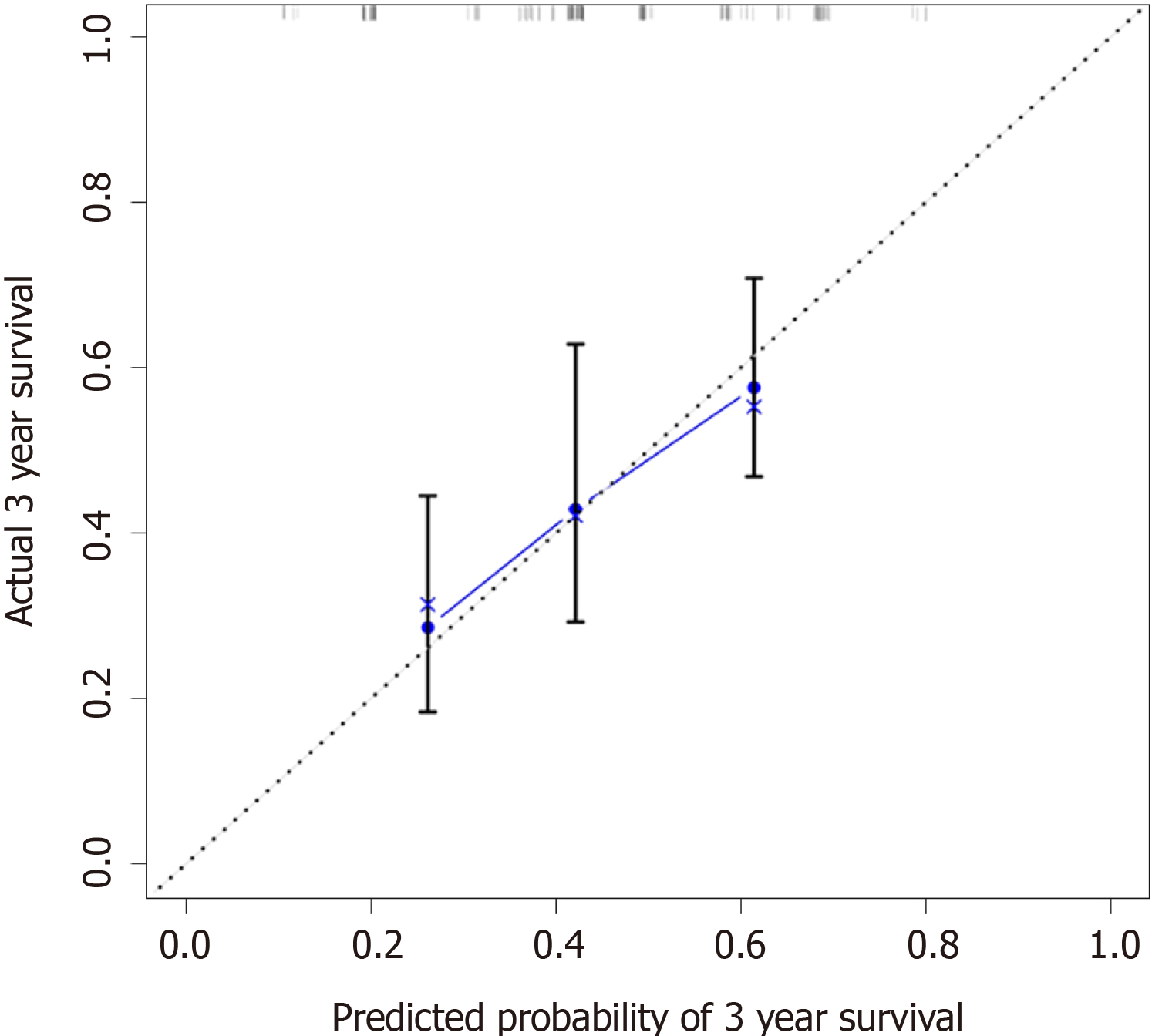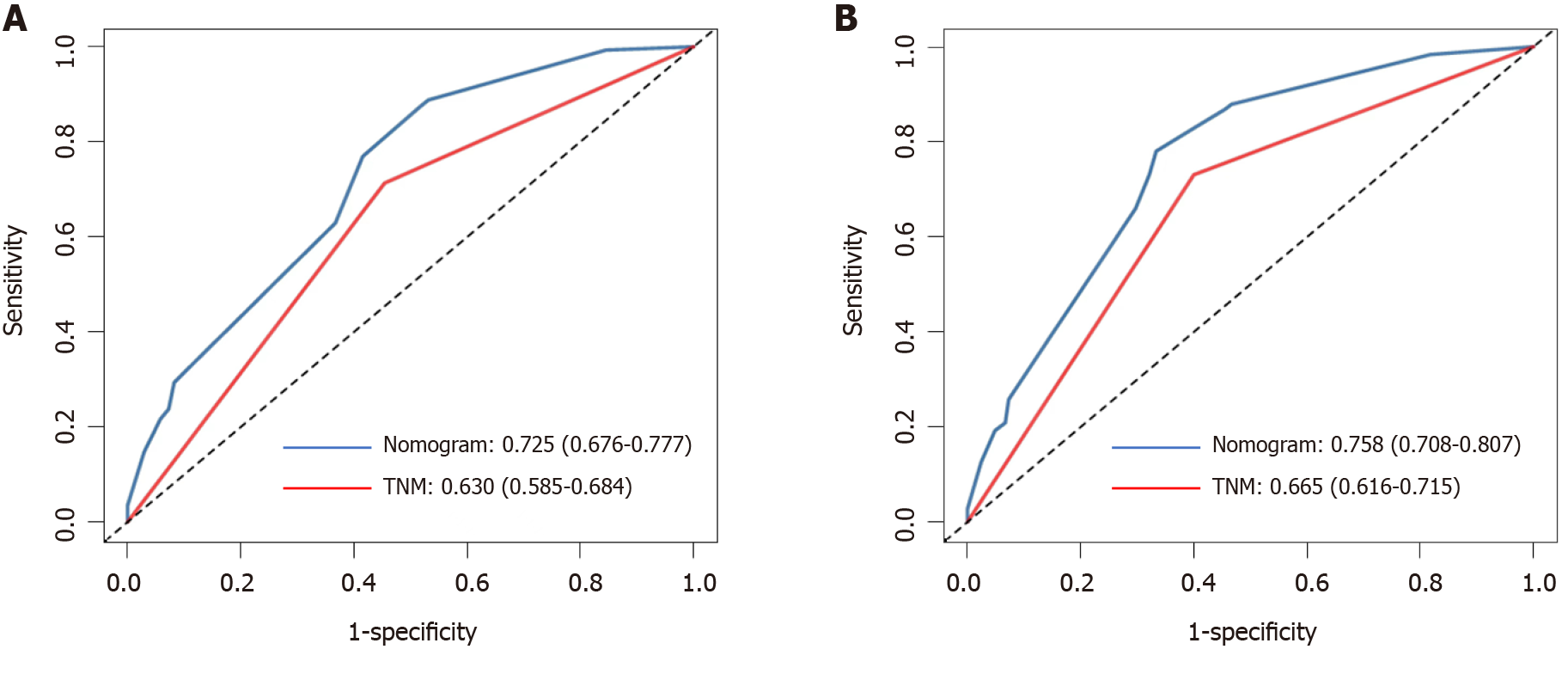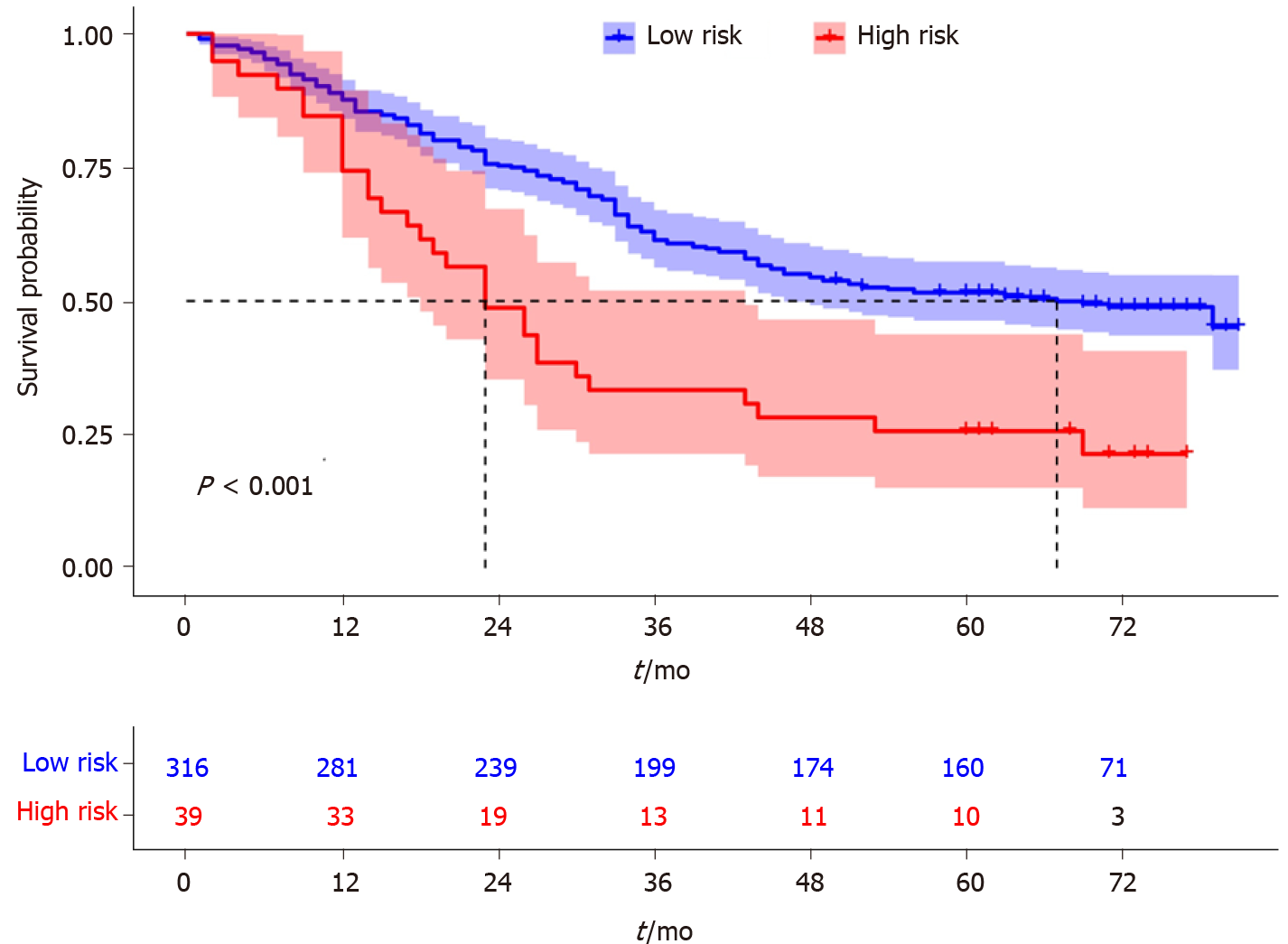Copyright
©The Author(s) 2022.
World J Gastrointest Surg. Aug 27, 2022; 14(8): 788-798
Published online Aug 27, 2022. doi: 10.4240/wjgs.v14.i8.788
Published online Aug 27, 2022. doi: 10.4240/wjgs.v14.i8.788
Figure 1
Nomogram for predicting overall survival after curative resection of gastric cancer.
Figure 2
Calibration curves of the prognostic nomogram for 3-year overall survival.
TNM: Tumor-node-metastasis; BMI: Body mass index; NLR: Neutrophil-to-lymphocyte ratio.
Figure 3
Calibration curves of the prognostic nomogram for 5-year overall survival.
Figure 4
Calibration curves in the testing group for 3-year overall survival.
Figure 5
The receiver operating characteristic curves of the prognostic nomogram and tumor-node-metastasis staging for 3-year overall survival.
Figure 6
The receiver operating characteristic curves of the prognostic nomogram and tumor-node-metastasis staging for 5-year overall survival.
Figure 7
Survival curves stratified by the score calculated by the nomogram (low risk: < 58 and high risk: ≥ 58).
- Citation: Wei ZJ, Qiao YT, Zhou BC, Rankine AN, Zhang LX, Su YZ, Xu AM, Han WX, Luo PQ. Model established based on blood markers predicts overall survival in patients after radical resection of types II and III adenocarcinoma of the esophagogastric junction. World J Gastrointest Surg 2022; 14(8): 788-798
- URL: https://www.wjgnet.com/1948-9366/full/v14/i8/788.htm
- DOI: https://dx.doi.org/10.4240/wjgs.v14.i8.788









